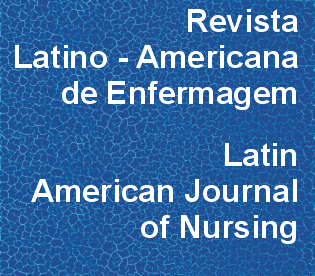Basic life support: evaluation of learning using simulation and immediate feedback devices
DOI:
https://doi.org/10.1590/1518-8345.1957.2942Keywords:
Education Nursing, Education Distance, Educational Technology, Cardiopulmonary Resuscitation, Simulation, Basic Cardiac Life SupportAbstract
Objective: to evaluate students’ learning in an online course on basic life support with immediate feedback devices, during a simulation of care during cardiorespiratory arrest. Method: a quasi-experimental study, using a before-and-after design. An online course on basic life support was developed and administered to participants, as an educational intervention. Theoretical learning was evaluated by means of a pre- and post-test and, to verify the practice, simulation with immediate feedback devices was used. Results: there were 62 participants, 87% female, 90% in the first and second year of college, with a mean age of 21.47 (standard deviation 2.39). With a 95% confidence level, the mean scores in the pre-test were 6.4 (standard deviation 1.61), and 9.3 in the post-test (standard deviation 0.82, p <0.001); in practice, 9.1 (standard deviation 0.95) with performance equivalent to basic cardiopulmonary resuscitation, according to the feedback device; 43.7 (standard deviation 26.86) mean duration of the compression cycle by second of 20.5 (standard deviation 9.47); number of compressions 167.2 (standard deviation 57.06); depth of compressions of 48.1 millimeter (standard deviation 10.49); volume of ventilation 742.7 (standard deviation 301.12); flow fraction percentage of 40.3 (standard deviation 10.03). Conclusion: the online course contributed to learning of basic life support. In view of the need for technological innovations in teaching and systematization of cardiopulmonary resuscitation, simulation and feedback devices are resources that favor learning and performance awareness in performing the maneuvers.Downloads
Download data is not yet available.
Downloads
Published
2017-01-01
Issue
Section
Original Articles
License
RLAE’s authorship concept is based on the substantial contribution by each of the individuals listed as authors, mainly in terms of conceiving and planning the research project, collecting or analyzing and interpreting data, writing and critical review. Indication of authors’ names under the article title is limited to six. If more, authors are listed on the online submission form under Acknowledgements. The possibility of including more than six authors will only be examined on multicenter studies, considering the explanations presented by the authors.Including names of authors whose contribution does not fit into the above criteria cannot be justified. Those names can be included in the Acknowledgements section.
Authors are fully responsible for the concepts disseminated in their manuscripts, which do not necessarily reflect the editors’ and editorial board’s opinion.
How to Cite
Basic life support: evaluation of learning using simulation and immediate feedback devices. (2017). Revista Latino-Americana De Enfermagem, 25, e2942-. https://doi.org/10.1590/1518-8345.1957.2942



